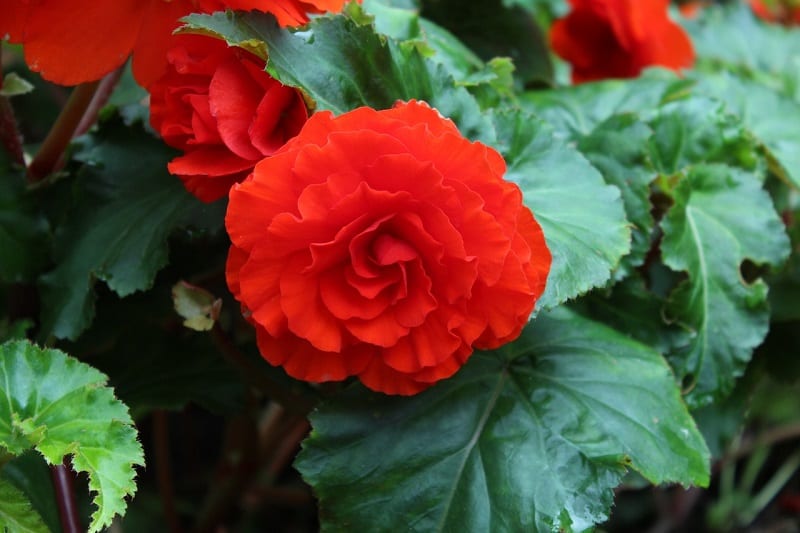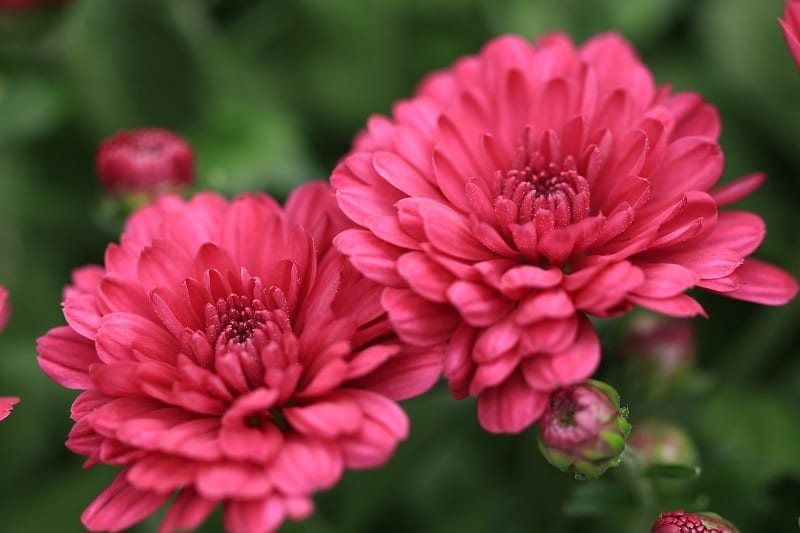Many gardeners are pet-lovers, too. If you garden and happen to own a dog, however, you’ll have to do some research before you grow or buy plants.
Some dogs – puppies, most especially – will nibble on pretty much anything. And for these household pets, toxic plants pose a serious threat.

Keeping Your Dog Safe in Your Garden
Contents
Every dog-lover knows that the backyard and garden can be a fun place for dogs. Gardens permit them space to be dogs. Here they can run, roll around the lawn in the sunshine, and explore.
But a huge number of plants are highly toxic – even deadly – for dogs. You’ll often find them in the park. Some may even be present in your garden.
The list below is far from complete, but it covers some of the most common garden plants that are toxic for dogs.
Tomato Plant
Tomatoes are a garden favorite. They are easy to grow and their sweet, juicy fruit is quite delicious.
Make sure to keep dogs away, though. The plants can cause weakness, gastrointestinal problems, drowsiness, dilated pupils, slow heart rate, and confusion.

Aloe Vera
People rub this plant’s sap on their skin as a soothing salve. Some even drink the juice. But you need to keep your dog away from aloe.
For dogs, the saponins in this succulent can cause vomiting, diarrhea, lethargy, tremors, and a general depression in the central nervous system.

Onions
Onions are so easy to grow that experts recommend them for novice gardeners. That’s among the reasons why they are a staple in many gardens.
However, you should take extra caution if you have dogs – or cats – in the house.
Onion plants can cause drooling, nausea, oral irritation, vomiting, diarrhea, lethargy, abdominal pain, elevated heart and respiratory rates, weakness, and pale gums in dogs.

Begonias
These bright, colorful perennials – annuals in cool regions – are a popular garden plant. Many grow them as an indoor plant, as well. However, they can cause some very uncomfortable symptoms in pets. This is particularly true of the plant’s highly toxic tubers.
Dogs that chew on begonias experience intense burning and irritation in their mouths, tongue, and lips. They also cause excessive drooling, vomiting, and difficulty swallowing.

Tulips
You’ll find tulips just about everywhere in spring. These lovely plants are a mainstay in many gardens and parks. But keep your dog away from tulips. Make sure your pet does not ingest the bulbs, which are the most toxic.
Tulips can cause vomiting, depression, diarrhea, and drooling in dogs.

Daffodils
Daffodils are hardy perennials that grow in most regions of North America. The showy white or yellow flowers make them a favorite among many gardeners.
But the beautiful daffodil can cause intestinal spasms, low blood pressure, salivation, tremors, vomiting, diarrhea, and even cardiac arrhythmia in dogs.

Chrysanthemums
These lovely annuals – commonly called ‘mums’ – are popular in gardens. Many bring them indoors as house plants or cut flowers. Chrysanthemums have a mildly toxic effect on dogs but we’ve included them in this list as they are quite popular.
The toxin the plants contain, pyrethrins, is used in dog tick and flea medications. The plant may cause a lack of appetite, vomiting, and diarrhea in your pets.

Clematis
Clematis plants are among the most popular – and beautiful – flowering vines grown in the home landscape. These plants include woody, deciduous vines as well as herbaceous and evergreen varieties.
The lovely clematis can cause excessive drooling, vomiting, and diarrhea in dogs.

Baby’s Breath
We’re all familiar with the baby’s breath plant from bridal bouquets and cut flower arrangements. The plants and their small, delicate white flowers are also quite easy to grow, and that’s why many raise them in their backyards.
Baby’s breath plants can also cause vomiting and diarrhea in your canine buddies.

Foxgloves
Known for its towers of blooms, this garden classic is a favorite in gardens everywhere. The foxglove looks very much like its name, containing glove-like bells that come in an array of colors and patterns.
But foxgloves are as toxic to dogs – and people – as they are beautiful. The plants can cause drooling, nausea, vomiting, abnormal heart rate, cardiac arrhythmias, weakness, tremors, seizures, and – in the worst cases – even death.

Consult a Veterinarian
Again, the list above is by no means complete. If you own a dog, then we recommend that you make a list of the plants in your backyard and home. You should include any plants you intend to grow in that list, too.
Consult a veterinarian and check whether any of the plants in your inventory are harmful to your pet.
If you have any of the plants above in your garden or are using any of them to decorate the inside of your home, be especially careful.
If you notice a decline in your dog’s health, contact a veterinarian immediately.
Here’s a quick video…








